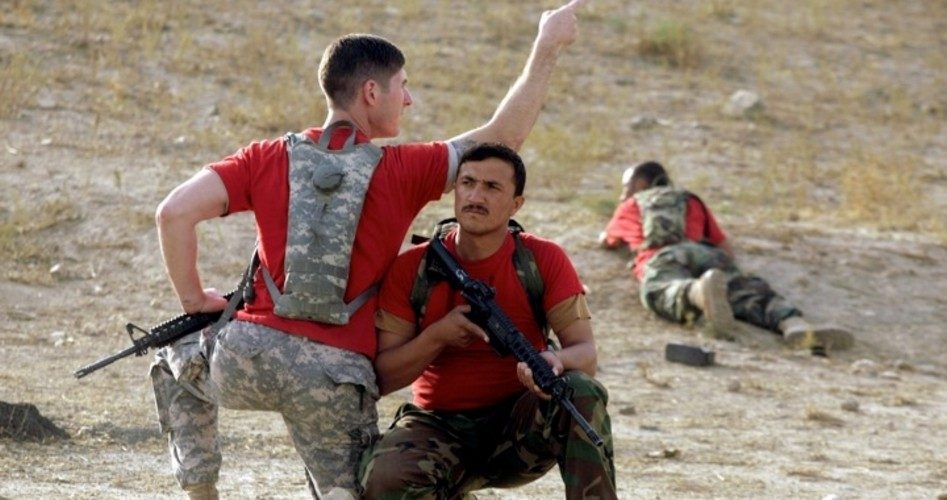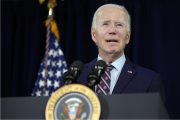
Another killing of an American serviceman by allied Afghan soldiers Sunday brought the death toll of American military personnel to 2,000. It also brought to 52 the number of Americans killed this year in “insider attacks” by Afghan government forces or insurgents disguised in their uniforms, a recurrence that left the top U.S. general in Afghanistan venting his frustration in an interview broadcast Sunday on CBS’s 60 Minutes.
“I’m mad as hell about them, to be honest with you,” Gen. John Allen said of the insider attacks. Allen voiced his concerns about the effect the attacks are having on the American public as well as the ongoing danger to U.S. and coalition forces. “It reverberates everywhere across the United States,” he said. “You know, we’re willing to sacrifice a lot for this campaign, but we’re not willing to be murdered for it.”
“We have to get on top of this. It is a very serious threat to the campaign,” Gen. Martin Dempsey, chairman of the U.S. Joint Chiefs of Staff told the Associated Press. The most recent fighting between U.S. and allied Afghan units came only days after U.S. Defense Secretary Leon Panetta said most U.S. and coalition combat units in Afghanistan returned to their practice of partnering with Afghan forces, less than two weeks after joint operations had been suspended because of the insider attacks. In late August, the training of new recruits in the Afghan military and police forces by coalition troops was suspended, pending a review of the vetting process for screening out Taliban and other insurgents.
Conflicting accounts of the latest incident, however, left unclear who actually started the shooting that killed a civilian contractor, as well as a U.S. soldier. According to Shahidullah Shahid, a province spokesman, the exchange began after insurgents launched a mortar attack upon a U.S. checkpoint and American soldiers, believing they were under fire from a nearby Afghan army checkpoint, opened fire on the Afghan troops. The Afghan troops returned fire. The fighting broke out as a result of the “misunderstanding,” Shahid said.
NATO’s International Security Assistance Force (ISAF) gave a different account of the fighting. “After a short conversation took place between [Afghan army] and ISAF personnel, firing occurred which resulted in the fatal wounding of an ISAF soldier and the death of his civilian colleague,” the coalition said in a statement released Sunday. It said three Afghan soldiers died “in an ensuing exchange of fire.”
At the Pentagon, Department of Defense Press Secretary George Little called the two thousandth death of an American serviceman in Afghanistan one of the “arbitrary milestones defined by others.”
“We honor all courageous Americans who have paid the ultimate sacrifice in Afghanistan to make the American people more secure,” Little said. “The fact of the matter is that America is safer because of all of those who have served in this war, including our fallen heroes.”
The war in Afghanistan, the longest war in U.S. history, began on October 7, 2001, as U.S. and coalition forces launched a campaign to topple the Taliban government in Kabul and go after al-Qaeda units in that country, following the terrorist attacks in New York and Washington on September 11 that took the lives of nearly 3,000 people. The Taliban regime was quickly overthrown and al-Qaeda units routed, but Western forces have remained to help the government headed by Hamid Karzai battle insurgent forces and prevent the Taliban from returning to power. The alliance between Western nations and Kabul has been a rocky one, however, marked by repeated accusations of corruption in the Karzai regime and Afghan outrage over the burning of Korans by U.S. troops and the killing of 17 civilians in a shooting rampage by a U.S. soldier earlier this year. In March Karzai called for the U.S. and allied forces to be restricted to their bases and out of the country by next year. The Obama administration has said it will stick to its timetable of having all combat units out of the country in 2014, though plans call for an undetermined number of U.S. advisors to remain for continued training and logistical aid to Afghan government forces.
The United States has already withdrawn the more than 33,000 additional troops sent into the country during the “surge” ordered by President Obama in 2009, leaving 68,000 still in the country, along with 40,000 troops from the United Kingdom and other NATO and coalition allies attempting to repel the insurgents and create a stable and secure Afghanistan. The ongoing conflicts between coalition and Afghan forces and the problems those conflicts present in training the country’s military and police personnel have raised questions, however, about when, if ever, the Afghans will be ready to defend the country on their own. While the U.S. Congress has repeatedly voted down resolutions calling for an accelerated withdrawal of American troops, Sen. John McCain (R-Ariz.), long an advocate for increasing war efforts in both Iraq and Afghanistan, recently said a faster withdrawal from Afghanistan should be considered as an option.
“I think all options ought to be considered, including whether we have to just withdraw early, rather than have a continued bloodletting that won’t succeed,” the Arizona Republican and 2008 Republican presidential nominee said on September 26. But fellow Republican and Senate colleague Lindsey Graham of South Carolina, usually a close ally of McCain on military and foreign policy issues, fervently disagreed. “What happens when you leave? Tell me a scenario where we’re safer by pulling the plug on Afghanistan,” Graham said to reporters. “I can’t envision a scenario that doesn’t lead to holy hell … and I can’t envision a scenario where another 9/11 doesn’t come about.”
But al-Qaeda has, by all accounts, been routed from Afghanistan and its units are said to be spread out among a number of countries throughout the world. It is not clear how continued fighting against the Taliban or other insurgents in Afghanistan will prevent another 9/11. Continued U.S. military presence in the region and the killing of civilians by “collateral damage” may, on the contrary, inspire more anti-American sentiment and draw more recruits into al-Qaeda and other militant anti-Western forces. American soldiers, meanwhile, may think they are already in a type of hell in Afghanistan, where U.S. and coalition forces are being killed at the rate of one a day. It remains to be seen how staying there another two years will make Afghanistan, let alone the United States, safer and more secure.
With 68,000 U.S. troops still in the country, it appears a safe bet that Gen. Allen is not the only American who is “mad as hell” about the course of events in Afghanistan.
Photo of U.S. soldier training Afghans: AP Images


